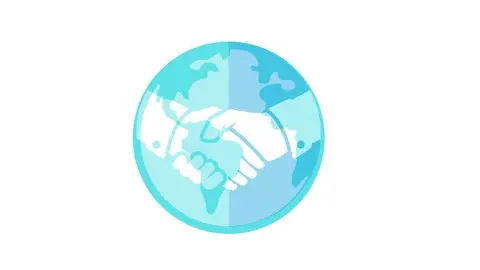Beginners Guide To International Disputes.
Published 12/2023
MP4 | Video: h264, 1920x1080 | Audio: AAC, 44.1 KHz
Language: English | Size: 2.65 GB | Duration: 2h 18m
Published 12/2023
MP4 | Video: h264, 1920x1080 | Audio: AAC, 44.1 KHz
Language: English | Size: 2.65 GB | Duration: 2h 18m
International law and dispute resolution methods.
What you'll learn
Comprehend the complexities of international disputes and recognize your potential to contribute positively to
Understanding the different categories of international law and how they shape interactions between nations.
Elements of Public Dispute Resolution: Explore the essential elements that contribute to the peaceful resolution of conflicts among nations.
What is International Dispute Settlement? Attain a better perspective on the definition and significance of international dispute settlement in the global arena
Uncover the nuances of what constitutes an international dispute and the diverse goals and methods that can be employed to address them.
Grounds for Disagreement: Learn about the various grounds for disagreement, including legal and political disputes, and understand the distinctions between them
Navigate the fine line that separates political disputes from legal differences, a crucial distinction in the field of international law.
Methods used in international dispute settlement.
2 main categories: 1. Amicable or pacific means of settlement or extra-judicial peaceful means. 2. Coercive or compulsive means of settlement.
Explore amicable or Pacific Means of Settlement.
Diplomatic Means of Dispute Settlement: 1. Negotiation: 2. Mediation: 3. Good Offices: 4. The distinction between Good Offices and Mediation 5. Inquiry:
Judicial means of dispute settlement 1. Arbitration: 2. Adjudication: International Court of Justice 3. Intervention.
Dispute Settlement Procedures Among Member States Of International Organizations 1. Geneva Convention 2. The United Nations
Explore coercive or compulsive means of settlement.
Within coercive or compulsive means of settlement, learn about, 1. Retortion 2. Reprisals 3. Embargo 4. Pacific Blockade
It is important to highlight the modern challenges associated with the above noted methods.
Conclusion
Requirements
• Must be able to understand English
• Having previous knowledge of Law or legal systems is helpful but not essential
Description
Are you a law student, legal professional, or someone with a keen interest in the world's affairs, international law and dispute resolution? This course will equip you with essential knowledge to comprehend the fundamental concepts in the field of international law and dispute resolution procedures.I will guide you through the historical context and foundation of International Law and dispute resolution. Additionally, I'll explain the significance of having an international legal framework and how it functions in contrast to domestic legal systems. As our world becomes increasingly interconnected and nations and cultures intermingle more frequently, International Law will maintain its essential role in shaping this evolving global community.Developing a foundational understanding of International Law and dispute resolution is essential for comprehending your area of study and gaining insights into our global society. By the end of this course, you will have a foundational understanding of International Law and dispute resolution, allowing you to navigate the complexities of global interactions confidently.The topics covered in this course are:· Introduction and Objective.· Categories of International Law.· Elements of Public Dispute Resolution.· What is International Dispute Settlement?· Meaning of International Dispute.· Grounds for Disagreement.· Distinguishing Between Political and Legal Differences 1. Legal Disputes: 2. Political Disputes:· Methods used in international dispute settlement. 1. Amicable or pacific means of settlement or extra-judicial peaceful means 2. Coercive or compulsive means of settlement· Amicable or Pacific Means of Settlement 1. Diplomatic Means of Dispute Settlement 2. Judicial Means of Dispute Settlement 3. Dispute Settlement Procedures Among Member States of International Organizations.· Diplomatic Means of Dispute Settlement: 1. Negotiation: 2. Mediation: 3. Good Offices: · The distinction between Good Offices and Mediation 4. Inquiry: 5. Conciliation:· Judicial Means of dispute Settlement 1. Arbitration: 2. Adjudication: International Court of Justice 3. Intervention· Dispute Settlement Procedures Among Member States Of International Organizations 1. Geneva Convention 2. The United Nations· Coercive or Compulsive Means Of Settlement 1. Retortion 2. Reprisals 3. Embargo 4. Pacific Blockade· Challenges· Conclusion
Overview
Section 1: Introduction
Lecture 1 Introduction and Overview
Lecture 2 Introduction and objective
Section 2: Categories of International Law
Lecture 3 Categories of International law
Section 3: International Courts and Tribunals
Lecture 4 International Courts and Tribunals
Section 4: Elements of Public Dispute Resolution
Lecture 5 Elements of Public Dispute Resolution
Section 5: What is International Dispute Settlement?
Lecture 6 What is International Dispute Settlement?
Section 6: Grounds for Disagreement
Lecture 7 Grounds for Disagreement
Lecture 8 Distinguishing Between Political and Legal Differences
Section 7: Methods
Lecture 9 Methods of Dispute Resolution
Section 8: (A) Amicable or pacific means of Settlement or Extra-Judicial Peaceful Means
Lecture 10 9 -Amicable or pacific means of settlement
Section 9: A1 - Diplomatic Means of Dispute Settlement
Lecture 11 Diplomatic Means of Dispute Settlement
Lecture 12 A1.1 - Negotiation
Lecture 13 A1.2 - Mediation
Lecture 14 A1.3 - Good Offices
Lecture 15 A1..4 Distinction between Mediation and Good Offices
Lecture 16 A1.5 Inquiry
Lecture 17 A1.5 Concilliation
Section 10: A2 - Judicial Means of Dispute Settlement
Lecture 18 A2.1 Arbitration
Lecture 19 A2.2 Adjudication
Lecture 20 A2.3 Intervention
Section 11: A3 - Dispute Settlement Procedures Among Member States of International Organiza
Lecture 21 A3.1 - Organizations Involved in International Dispute Resolution
Lecture 22 A3.2 - Geneva Convention
Lecture 23 A3.3.1 - United Nations
Lecture 24 A3.3.2 - United Nations (Part 2)
Section 12: B - Coercive or compulsive means of settlement
Lecture 25 B. Introduction to Coercive or Compulsive means of settlement
Lecture 26 B.1 - Retortion
Lecture 27 B.2 - Reprisals
Lecture 28 B.3 - Embargo
Lecture 29 B.4 - Pacific Blockade
Section 13: Challenges
Lecture 30 Challenges (Part 1)
Lecture 31 Challenges (Part 2)
Section 14: Conclusion
Lecture 32 Conclusion
• Lawyers,• Law Students,• Masters Students,• Bachelor Students,• Undergraduate Students,• General Public,• PhD Students,• Employees of NGOs or Charities



